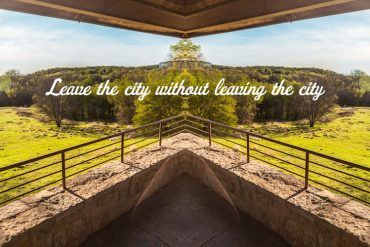In a recent study by StorageCafe, several Texas cities ranked in the top 50 in the nation for real estate development across 44 years. Among these were Houston, San Antonio, Austin, Dallas, Fort Worth, El Paso, Plano, Arlington and Irving, respectively. That’s nine out of 50 in Texas and eight in DFW.
StorageCafe analyzed real estate activity through Census data and research from Commercial Edge and Yardi Matrix to examine real estate development growth in the nation’s 100 largest cities from the last 44 years. The study noted a technology boom in Austin, the energy sector in Houston, Dallas’ financial hub and San Antonio’s military and healthcare industries as leading drivers of development.
Our southern big sister Dallas came in with 237,000 new apartments permitted since 1980, the fourth-highest number nationally, and 103 million square feet of industrial space built in the last 44 years.
So where did Plano stack up against these cities?
Plano ranked 33rd in the nation, with key data points like:
- 55,775 single family permits
- 41,162 multifamily permits
- 4,433,811 square feet of self storage
- 15,055,453 square feet of industrial space
- 20,755,035 square feet of retail space
- 41,045,870 square feet of office space
“The construction scene in the US has always been bustling, but what we’re building today looks quite different from what was breaking ground when Millennials were born. Back then, retail and office construction dominated, with shopping malls serving as the anchors of social life,” the study said. “Today, there’s a noticeable shift towards urbanization, marked by significant growth in multifamily housing and a surge in self-storage and industrial spaces.”
In fact, Plano’s growth rose significantly in retail construction until the 2000s, with over half a million square feet supplied annually on average, peaking at nearly 700,000 and dropping in the 2010s to the low 200 thousands. Office space boomed in nearly a million square feet added annually from the 1990s to the 2010s, though this number has decreased to pre-1980 numbers in the 2020s so far.
While Plano’s multifamily housing scene hasn’t seen a major boost since the 1990s, according to StorageCafe data, industrial space is on the rise after a significant drop in new industrial properties in the 1990s.
What does this mean for Plano?
We know that Plano is in redevelopment. The 2021 Comprehensive Plano outlined a plan for undeveloped land, with 4,712 acres of undeveloped space in the city in 2010 and only 1,970 left today — that’s 4.3%. Most of this land is bordering major highways, with big chunks of the city’s interactive map highlighted along Highway 75 and Highway 121.
A redevelopment plan was modified, calling for single-family housing options that fit community needs, multiuse developments that public open space, pedestrian connectivity and significant portions of non-residential space. This includes a preference for multifamily housing developments to meet housing diversification or economic development standards by meeting needs of the specific area.





